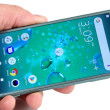Review: BlackBerry DTEK50
Aug 4, 2016, 3:30 PM by Eric M. Zeman
updated Aug 4, 2016, 3:33 PM
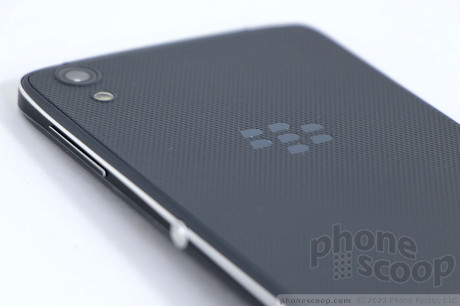
The DTEK50 runs BlackBerry's apps and services on Google's operating system and Alcatel's hardware. It's a curious collaboration of sorts that adds up to a better 'Berry. This slim Android device is everything that BlackBerry phones should have been — but never were. Here is Phonecoop's in-depth review.
Is It Your Type?
The DTEK50 is a thin, attractive Android smartphone that includes BlackBerry's suite of business communication services. This device should appeal to style-conscious corner office types who want BlackBerry's secure messaging tools in a sleeker piece of hardware.
Body
Let's be real: BlackBerry could never have designed the DTEK50. The closest BlackBerry ever got to a phone this sleek was the 2013 Z30, and that was a bit of a beast. Now, after cutting its hardware team to the bone, BlackBerry is relying on others to design and manufacture its hardware. The DTEK50's design may have some elements dictated by BlackBerry, but Alcatel did all the legwork when it created the Idol 4, on which this is based.
The phone is pleasingly thin and light. It's black with gray and chrome accents, making it rather conservative in appearance. It fits in with the buttoned-down look common to BlackBerries. The black front panel and gray rear panel are held together by an aluminum frame, a popular design trend these days. Perhaps the biggest deviation is the use of materials: where Sony and Samsung often use glass for both the front and rear, the DTEK50 uses polycarbonate for the rear to help toughen it up. The metal frame is painted gray but has bright, polished chamfers to give it a dash of personality.
The DTEK50 has a 5.2-inch screen and the dimensions are thankfully kept in check. At 5.79 inches tall and 2.85 inches wide, it is about the same basic size as the HTC 10, though at 7.4mm thick, it is significantly thinner than the 10. I found the phone comfortable to hold and use. I had no issue reaching the entire screen with my thumb. It may be too big for those with the smallest hands, but it should work well for most people. I had no trouble slipping the phone into my pocket, but the grippy rear panel sometimes clings to your pocket interior.
The device is put together tightly. The materials, fit, and finish are all quite good. Since BlackBerry chose to replace the Idol 4's glass rear panel with polycarbonate, the DTEK50 has a more rugged stature. It feels less delicate and I think business users will find it an appealing combination of style and substance.
There are a few curious things going on with the phone's front surface. As expected, most of the face is made of glass. The bezels are acceptable thicknesses, and the display itself blends in perfectly with the glass when off. The glass panel is wrapped in a polycarbonate subframe, and the subframe is then contained within the aluminum outer frame. You can feel the rubbery texture of the subframe along the sides of the glass. The subframe thickens up between the glass and the top/bottom ends of the phone to make room for stereo speakers, which are visible only when you hold the phone close. With speakers stored in the frame, the glass itself has no cuts or slits for an earpiece. The sensor and selfie cam are visible in the black glass. The DTEK50 does not use hardware Android buttons.

BlackBerry was unable to fix one of my biggest gripes with the Idol series, which is the placement of the screen lock button. Rather than position the key on the right edge or top, the button is near the top of the left side of the DTEK50. The button has a decent profile, though, and good travel and feedback. Chrome accents make it easy to spot.
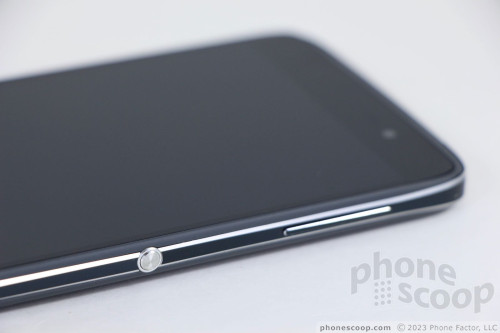
The action key on the right edge of the phone (where the screen lock button ought to be) is big, circular, and impossible to miss thanks to chrome accents. The travel and feedback on the action key is rather mushy. BlackBerry said users can program the button to open apps or even perform certain actions, such as compose emails or open the camera. That's pretty neat. The volume toggle is above the action key. It's easy enough to find with your thumb and the action is good.
You'll find the SIM / memory card tray along the right edge, as well. The microUSB port is on the bottom and the headphone jack is on top.
Similar to the front, the polycarbonate rear plate is tucked into a subframe. The material has a dimpled pattern with a soft-touch paint job to give it some grip. The DTEK50 is definitely easier to hold onto and use when compared to the Idol 4. The 13-megapixel camera and two-tone flash are tucked into the top-left corner and are flush with the surface. Like the Idol 4, the DTEK50 does not have a removable rear panel. That means the 2,610 mAh battery is stuck inside. This breaks with BlackBerry tradition and may be a dealbreaker for some.
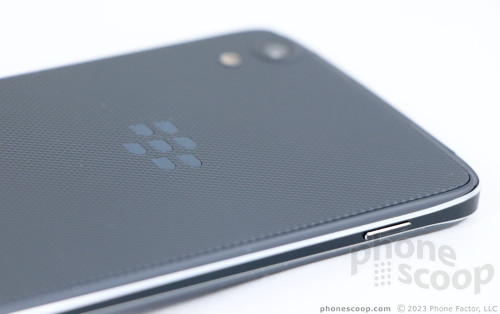
The device does not have a physical keyboard, as so many BlackBerries once did. That may be sacrilege to some, but it's progress to others.
In all, the DTEK50 is a very good piece of hardware. It's comfortable to use and is well made.
Screen
The 5.2-inch full-HD screen looks great. It's bright enough to use under direct sunlight at about 60%, but I wish it resisted fingerprints a bit better. The LCD panel offers excellent viewing angles. Text, images, icons, and web sites are sharp and free of pixelated edges. It's a fine display.
Signal
BlackBerry sells the DTEK50 unlocked. It operates on GSM/LTE networks with decent band support for AT&T and T-Mobile. It is not compatible with CDMA networks. In fact, BlackBerry said it has no plans to make a CDMA version (sorry, Sprint and Verizon users!)
I tested the DTEK50 on AT&T's network around the New York City area and found it to perform about average when compared to other AT&T phones. The phone was connected to LTE the majority of the time, but did rip to 3G on occasion. I didn't have any trouble making calls, which connected in strong and weak coverage areas alike. The phone did drop one call at highway speeds and missed one call that went directly to voicemail. Data speeds were decent, but far from eye-popping. Social networks such as Facebook and Instagram were speedy enough, but video was often slow to play. Spotify and YouTube both experienced small delays and hiccups when streaming over the network.
Sound
The DTEK50 is a little uneven when it comes to call quality. The earpiece speaker produces enough volume to be heard in most places, but the quality of the sound is thin and shrill. You can probably conduct calls at home, the office, and in the car without problem, but busy city streets or noisy coffee shops may be too much. People I spoke to through the DTEK50 said I sounded tiny.
The speakerphone is much worse. Neither volume nor clarity is any good. You can hold a conversation at home or the office but not in the car or a busy airport. Moreover, voices sound like they're burping through mud. I'm pretty shocked at the poor quality.
Ringers and alerts tones are okay but not great. The vibrate alert is strong enough that you'll feel the phone ring when it's in your pocket.
The phone has stereo speakers that pump out 3.6W of sound each. They are very loud, but not quite as good as the speakers on the larger Idol 4S. Quality is good enough that you can probably skip using a Bluetooth speaker in small quarters.
Battery
BlackBerry says the 2,610 mAh battery delivers 17 hours of continuous mixed use. That means the phone can function with the screen on and run a variety of apps (email, music, camera, video, social networking) for a full waking day without taking a break. BlackBerry's claims are on point. The phone typically pushed from 7am to Midnight with plenty of power to spare (~30%) with intermittent-but-heavy use. In other words, the screen wasn't on the entire time, but I used the phone a lot throughout the day.
The device includes the Android battery saver tool for managing battery life when needed.
Thanks to Quick Charge 2.0, the DTEK50 can ingest a 20% charge in just 10 minutes. The phone does not ship with a rapid charger. You'll need to get your own. Boo.
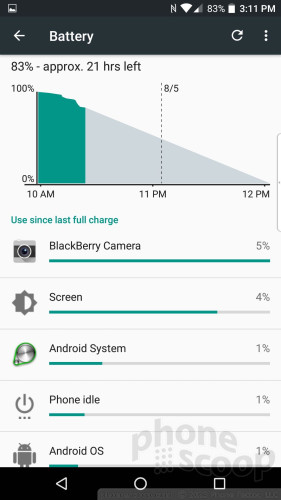
Bluetooth, GPS, NFC, WiFi
All of the DTEK50's secondary radios functioned as they should. The Bluetooth radio was easy to pair/connect to other devices, including PCs, headsets, speakers, and my car. Call quality was pretty decent through a standard headset, but darned awful through my car's hands-free system. Music sounded decent when pushed to Bluetooth speakers, but you may be better off relying on the DTEK's speakers.
I was able to use the phone's NFC radio to aid in pairing with some of the accessories mentioned above. The NFC radio also supports Android Pay for mobile payments.
The DTEK50's GPS radio is quick and accurate. It located me in a blink and was often as accurate as 10 feet. The radio worked well with Google Maps, and the DTEK functioned as a real-time navigation device quite effectively.
I found WiFi performance to be excellent.
Comments
No messages



















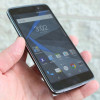 Hands-On with the BlackBerry DTEK50
Hands-On with the BlackBerry DTEK50
 BlackBerry Overhauls Productivity Tab for Android
BlackBerry Overhauls Productivity Tab for Android
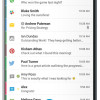 BlackBerry Expands Hub+ to More Android Phones
BlackBerry Expands Hub+ to More Android Phones
 BlackBerry Delivers Significant Update to Priv and DTEK50
BlackBerry Delivers Significant Update to Priv and DTEK50
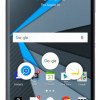 BlackBerry DTEK50 Is A Secured, Rebadged Alcatel Idol 4
BlackBerry DTEK50 Is A Secured, Rebadged Alcatel Idol 4
 BlackBerry DTEK50
BlackBerry DTEK50




